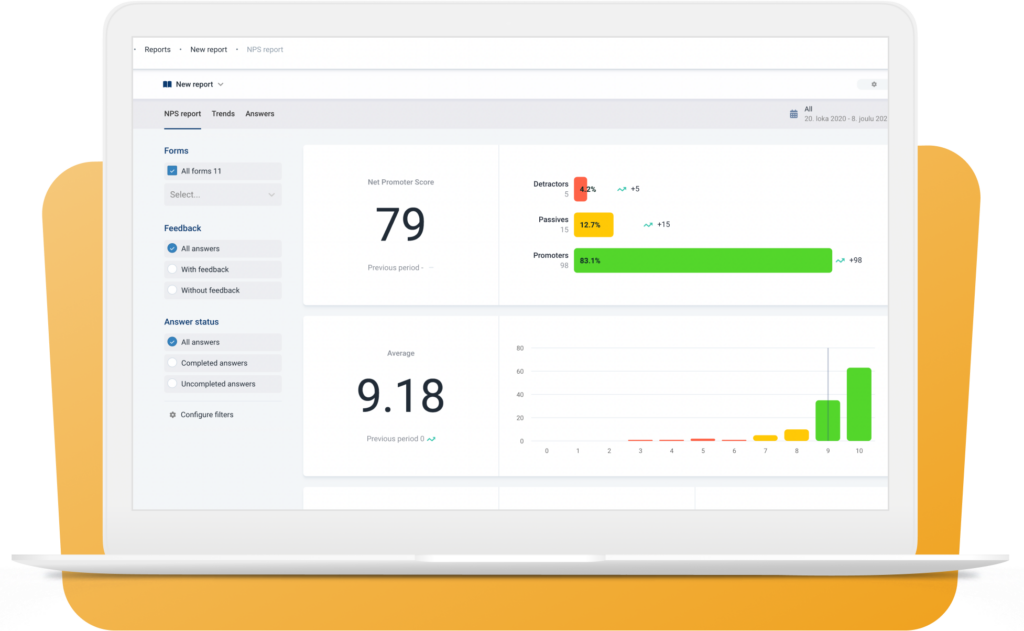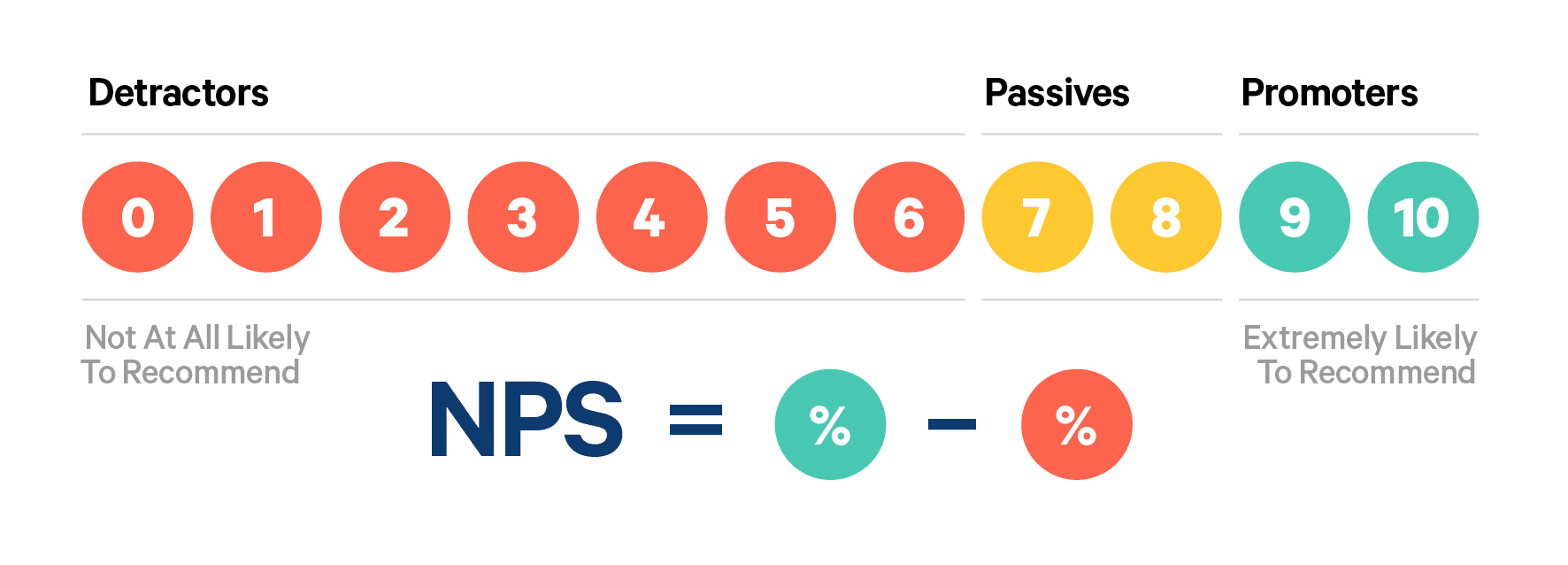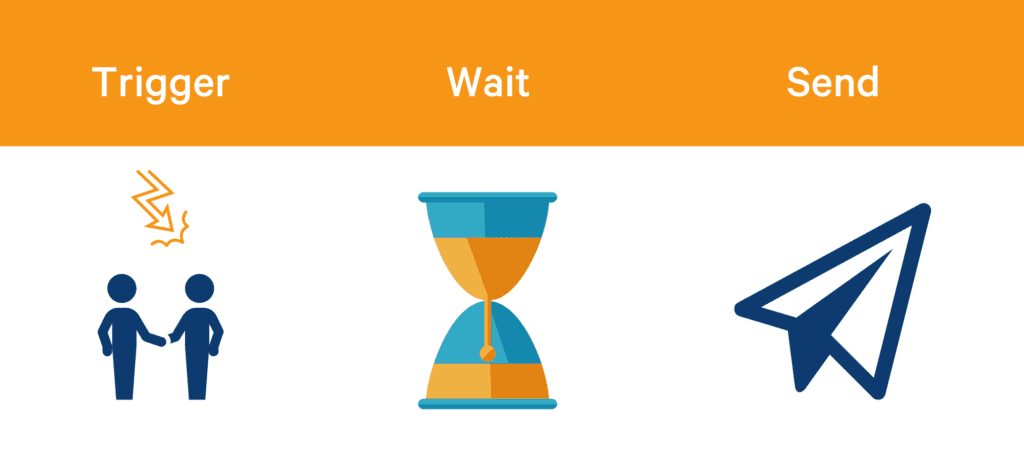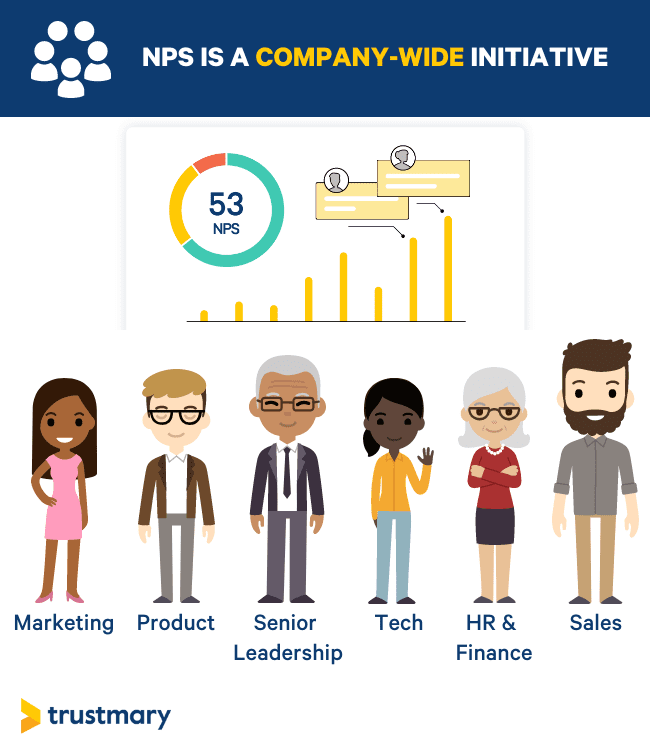What is NPS and how do you measure it?

If you're interested in figuring out whether measuring NPS would make a difference for your business, keep on reading. You'll learn:
- What Net Promoter Score is
- How to measure NPS
- Why every business needs it
- How to start using it – today
Let's get to it!
What is NPS and how do you measure it?
NPS or Net Promoter Score is one of the most widely used customer loyalty KPI. It measures customer satisfaction with one question.
How likely would you recommend a service / product to a friend or colleague?
The respondent answers the question on a scale of 1 to 10. 1 stands for a highly unlikely recommendation and 10 a very likely one.
Based on their answers, the respondents are divided into three categories:
9-10 = NPS Promoters
7-8 = Passives
1-6 = NPS Detractors
NPS is calculated by subtracting the percentage of Detractors from the percentage of Promoters. This will give you a score between -100 (no Promoters) and 100 (no Detractors).

We have an interactive NPS calculator that you can try, if you want to calculate NPS by using with different scenarios even before having actual NPS data.
What is a good NPS?
NPS scores vary across different industries, but a positive NPS (one that is higher than zero) is generally considered good. An NPS score of +50 is generally deemed excellent, and anything over +70 is exceptional.
You can compare how you compare in your industry by taking a look at the data collected by NPS Benchmark.
Why NPS?
Although NPS has been criticized for its harsh formula, it's one of the most widely used metrics to study the quality of customer experience and customer loyalty.
- Research suggests that a question based on the likelihood of the recommendation helps to predict customer behavior and business performance effectively.
- NPS is closely tied to customer lifetime value, as loyal customers are more likely to buy more.
- From the customer's point of view, the NPS survey is quick and easy to answer.
- In consequence, the response rate is often higher as well.
Here's an example survey to showcase how easy it is to answer:
- NPS is a simple, ready-to-use metric that makes it easy to evaluate the success of your customer experience management.
- NPS sends a clear message about how much your clients like your company.
To get the most out of NPS:
- Use NPS Software to automate the process
- Measure NPS regularly and study how developments and changes affect it.
- In addition to the score itself, it's important to find out the reasons why the respondents gave a certain answer. Obtain information about the things that should be done differently to turn Detractors and Passives into Promoters. In other words, ask an open question after the NPS question. "What is the reason for your score?" or "Why did you choose this number?"

Start Measuring NPS Today
NPS is not only one of the easiest customer experience metrics to use, but it also gives you insights on the success of your business. It can be used to predict business growth.
We can help you integrate NPS measuring with your CRM (for example, Pipedrive, Hubspot to name a few)
Or if you'd rather do it yourself, here's how you can get started.
5 Steps to Start Using NPS Surveys
No matter if you're a B2B or B2C business, the following steps are universal.
1. Set Goals
Define internally what it is that you want to measure. Ask yourself at least the following questions:
- Is it enough to measure NPS once in every quarter?
- Would you like to send NPS surveys in certain touch points in the customer journey?
- Should all customers get a survey after each interaction or does there need to be a delay?
- How much resources can I allocate to reacting to feedback from unhappy customers?
- Do I have repeat business that I want to track more often?
- Is NPS email enough or do I need other channels as well?
Once you've set your goals, it's time to choose the Net Promoter Score system or software you want to use.
2. Choose NPS Software
There are many different NPS software to choose from, but we recommend using one that is flexible to use. Furthermore, you'll get the most out of NPS, when you can automate the sending of the NPS surveys to whichever triggers you want.

3. Create Survey
Once you've decided on which service to use for sending NPS surveys, it's time to create the survey itself.
If you're using Trustmary, you can use the ready-made NPS survey template which simultaneously asks the client if they'd like to give their feedback publicly or not. In other words, you can collect testimonials with the same survey!
In addition, you can customize it as you wish with the drag and drop survey-maker, and even add more questions, if you'd like.

4. Send Survey
Once you've created the survey, it's time to send it or automate which triggers will send it. Typically, you can either import a contact list manually or integrate the NPS software with your CRM to avoid exporting and importing data manually.
5. Analyze the Results
Once the NPS results come in, it's time to sit down with your team to analyze what makes your customers happy and where you still need to improve on.

The more customer data points you have, the better you can analyze how well you're doing in different areas of business.
Analyzing the results is a constant process that should be done at regular intervals for the best results!
Sending your first NPS survey is a great starting point, but that's only where the work really begins.
Create Quarterly NPS Reports
Visually present your NPS results to all teams.
When you start regularly measuring your NPS, you can find patterns which impact your customer satisfaction and loyalty. In order to notice these trends, you need to:
- Measure NPS at least once a quarter
- Analyze each report separately
- Compare the results with the previous quarter
- Compare the results against longer historical data

Include the relevant team members into analyzing the results, and don't forget to compare results between departments!
More importantly, keep in mind that your board of directors need to be aware of how your NPS is doing.
After all, NPS explains roughly 20% to 60% of the variation in organic growth. Net Promoter Score can be an indicator of future growth.
Further Reading:
FAQ about Net Promoter Score
How is Net Promoter Score connected to customer experience?
Net Promoter Score (NPS) is directly linked to customer experience as it gauges customer loyalty by asking how likely they are to recommend a company.
A high NPS reflects positive customer experiences, while a low NPS indicates areas needing improvement.
Can I improve customer relationships by measuring NPS?
Kind of. By regularly tracking NPS, you can identify satisfied customers who are likely to become advocates and address the concerns of dissatisfied customers, ultimately enhancing overall customer satisfaction and loyalty.
What should I do with NPS data?
- Categorize respondents into promoters, passives, and detractors.
- Analyze feedback to identify patterns and areas for improvement.
- Engage with detractors to resolve issues and enhance their experience.
- Leverage promoters for positive testimonials and referrals.
- Regularly monitor changes in NPS to track the impact of your actions.
- Adjust strategies based on NPS insights to improve customer satisfaction and loyalty.
Is revenue growth tied to Net Promoter Score?
A high NPS indicates strong customer loyalty and satisfaction, leading to increased customer retention, positive word-of-mouth referrals, and higher lifetime value of customers.
These factors contribute to overall revenue growth, as satisfied customers are more likely to continue purchasing and recommending the company to others, driving new business.
